Structurally Novel Antiestrogens Elicit Differential Responses from Constitutively Active Mutant Estrogen Receptors in Breast Cancer Cells and Tumors
- PMID: 28904064
- PMCID: PMC5645250
- DOI: 10.1158/0008-5472.CAN-17-1265
Structurally Novel Antiestrogens Elicit Differential Responses from Constitutively Active Mutant Estrogen Receptors in Breast Cancer Cells and Tumors
Abstract
Many estrogen receptor α (ERα)-positive breast cancers develop resistance to endocrine therapy via mutation of ERs whose constitutive activation is associated with shorter patient survival. Because there is now a clinical need for new antiestrogens (AE) against these mutant ERs, we describe here our development and characterization of three chemically novel AEs that effectively suppress proliferation of breast cancer cells and tumors. Our AEs are effective against wild-type and Y537S and D538G ERs, the two most commonly occurring constitutively active ERs. The three new AEs suppressed proliferation and estrogen target gene expression in WT and mutant ER-containing cells and were more effective in D538G than in Y537S cells and tumors. Compared with WT ER, mutants exhibited approximately 10- to 20-fold lower binding affinity for AE and a reduced ability to be blocked in coactivator interaction, likely contributing to their relative resistance to inhibition by AE. Comparisons between mutant ER-containing MCF7 and T47D cells revealed that AE responses were compound, cell-type, and ERα-mutant dependent. These new ligands have favorable pharmacokinetic properties and effectively suppressed growth of WT and mutant ER-expressing tumor xenografts in NOD/SCID-γ mice after oral or subcutaneous administration; D538G tumors were more potently inhibited by AE than Y537S tumors. These studies highlight the differential responsiveness of the mutant ERs to different AEs and make clear the value of having a toolkit of AEs for treatment of endocrine therapy-resistant tumors driven by different constitutively active ERs. Cancer Res; 77(20); 5602-13. ©2017 AACR.
©2017 American Association for Cancer Research.
Figures
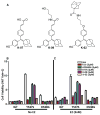
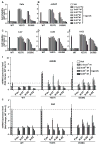

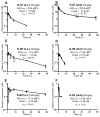
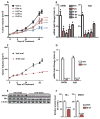
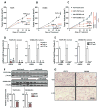
Similar articles
-
Suppression of breast cancer metastasis and extension of survival by a new antiestrogen in a preclinical model driven by mutant estrogen receptors.Breast Cancer Res Treat. 2020 Jun;181(2):297-307. doi: 10.1007/s10549-020-05629-y. Epub 2020 Apr 10. Breast Cancer Res Treat. 2020. PMID: 32277377 Free PMC article.
-
AZD9496: An Oral Estrogen Receptor Inhibitor That Blocks the Growth of ER-Positive and ESR1-Mutant Breast Tumors in Preclinical Models.Cancer Res. 2016 Jun 1;76(11):3307-18. doi: 10.1158/0008-5472.CAN-15-2357. Epub 2016 Mar 28. Cancer Res. 2016. PMID: 27020862
-
Antagonists for Constitutively Active Mutant Estrogen Receptors: Insights into the Roles of Antiestrogen-Core and Side-Chain.ACS Chem Biol. 2018 Dec 21;13(12):3374-3384. doi: 10.1021/acschembio.8b00877. Epub 2018 Nov 26. ACS Chem Biol. 2018. PMID: 30404440 Free PMC article.
-
Activating Mutations of ESR1, BRCA1 and CYP19 Aromatase Genes Confer Tumor Response in Breast Cancers Treated with Antiestrogens.Recent Pat Anticancer Drug Discov. 2017;12(2):136-147. doi: 10.2174/1574892812666170227110842. Recent Pat Anticancer Drug Discov. 2017. PMID: 28245776 Review.
-
Estrogen receptors and their downstream targets in cancer.Arch Histol Cytol. 2004 Dec;67(5):435-42. doi: 10.1679/aohc.67.435. Arch Histol Cytol. 2004. PMID: 15781984 Review.
Cited by
-
In silico screening for ERα down modulators identifies thioridazine as an anti-proliferative agent in primary, 4OH-tamoxifen-resistant and Y537S ERα-expressing breast cancer cells.Cell Oncol (Dordr). 2018 Dec;41(6):677-686. doi: 10.1007/s13402-018-0400-x. Epub 2018 Sep 4. Cell Oncol (Dordr). 2018. PMID: 30182339
-
Stereospecific lasofoxifene derivatives reveal the interplay between estrogen receptor alpha stability and antagonistic activity in ESR1 mutant breast cancer cells.Elife. 2022 May 16;11:e72512. doi: 10.7554/eLife.72512. Elife. 2022. PMID: 35575456 Free PMC article.
-
Evolution of 3-(4-hydroxyphenyl)indoline-2-one as a scaffold for potent and selective anticancer activity.RSC Med Chem. 2022 May 9;13(6):711-725. doi: 10.1039/d2md00110a. eCollection 2022 Jun 22. RSC Med Chem. 2022. PMID: 35814932 Free PMC article. Review.
-
Estrogen-independent molecular actions of mutant estrogen receptor 1 in endometrial cancer.Genome Res. 2019 Sep;29(9):1429-1441. doi: 10.1101/gr.244780.118. Epub 2019 Jul 30. Genome Res. 2019. PMID: 31362937 Free PMC article.
-
Ouabain and Digoxin Activate the Proteasome and the Degradation of the ERα in Cells Modeling Primary and Metastatic Breast Cancer.Cancers (Basel). 2020 Dec 19;12(12):3840. doi: 10.3390/cancers12123840. Cancers (Basel). 2020. PMID: 33352737 Free PMC article.
References
-
- Jeselsohn R, De Angelis C, Brown M, Schiff R. The Evolving Role of the Estrogen Receptor Mutations in Endocrine Therapy-Resistant Breast Cancer. Curr Oncol Rep. 2017;19:35. - PubMed
-
- Tryfonidis K, Zardavas D, Katzenellenbogen BS, Piccart M. Endocrine treatment in breast cancer: Cure, resistance and beyond. Cancer Treat Rev. 2016;50:68–81. - PubMed
-
- Robertson JF. Fulvestrant (Faslodex) -- how to make a good drug better. The oncologist. 2007;12:774–84. - PubMed
MeSH terms
Substances
Grants and funding
LinkOut - more resources
Full Text Sources
Other Literature Sources
Medical
Miscellaneous

